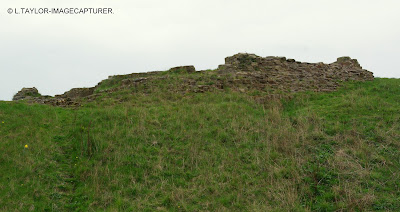ADOUR 102.
Manufacturer - Rolls Royce Turbomeca. Type - twin spool reheated turbofan. Primary use - Sepecat Jaguar. Performance - 5,165lbs static thrust, 7,380lbs maximum reheat. Entered service - 1973. General information - the Adour was jointly developed by an Anglo-French consortium to power the Jaguar. Thrust to weight ratio was 3.3 to 1 (dry power).
~~~~<<<<>>>>~~~~
KESTREL XVI.
Manufacturer - Rolls Royce. Type - V12 super charged water cooled piston. Primary use - Hawker Fury, Hawker Hart. Performance - 670hp. Entered service - 1935. General information - The first Rolls Royce design to use a cast block and a pressurized cooling system.
~~~~<<<<>>>>~~~~
MERLIN 28. ( cut away view ).
Manufacturer - Packard ( Rolls Royce licence built ). Type - 12 cylinder water cooled piston engine. Primary use- Avro Lancaster, Hawker Hurricane, Curtis Kittyhawk. Performance - 1,390hp. Entered service - 1941. General information - The US Packard Company built over 55,000 Merlin engines during world war two for both British and American use.
~~~~<<<<>>>>~~~~
LEONIDES 503/7A. ( cut away view ).
Manufacturer - Alvis. Type - 9 cylinder radial piston engine. Primary use - Percival Pembroke, Scottish Aviation Pioneer CC1. Performance - 540hp. Entered service - 1950. General information - There were many variants of the Leonides which was used in fixed wing, helicopters, military and civil aircraft.
~~~~<<<<>>>>~~~~
BRISTOL 605. ( BRISTOL SIDDELEY ).
This rocket motor was designed for BAC Buccaneer aircraft to provide assisted take off thrust, but was only fitted to the S50 variant used by the South African Air Force. It is a twin chamber rocket providing sea level static thrust of 8,000lbs and was fitted forward of the lower air brakes.
~~~~<<<<>>>>~~~~
STENTOR BSST1. ( cut away view ).
Manufacturer - Bristol Siddeley. Type - twin chamber liquid fuelled rocket engine. Primary use - Hawker Siddeley Blue Steel Nuclear stand off bomb. Performance - 20,000lbs thrust. Entered service - 1962. General information - This engine used Kerosene and Hydrogen Peroxide to power the blue steel nuclear stand off bomb at speeds up to mach 2.6 and to a distance of 104 miles from the launch aircraft. It is made largely of stainless steel.
~~~~<<<<>>>>~~~~
DOUBLE SPECTRE.
Manufacturer - Bristol Siddeley. Type - liquid fuelled rocket. Primary use - Hawker Siddeley Blue Steel test vehicles. Performance - 8,000 - 16,000lbs thrust. Entered service - 1959. General information - This development rocket was used to power test versions of the Blue Steel missile. It was also considered for the Saunders Roe P.177 rocket powered interceptor.
~~~~<<<<>>>>~~~~
SUPER SPRITE.
Manufacturer - DE Havilland. Type - liquid fuelled rocket motor. Primary use - assisted take off unit for Vickers Valiant. Performance - 42,000lbs for 40 seconds. Entered service - 1955. General information - The Super Sprite was the first rocket engine to receive type approval for quantity production and general service use.
~~~~<<<<>>>>~~~~
SPECTRE.
Manufacturer - DE Havilland. Type - liquid fuelled rocket. Primary use - Saunders Roe S.R.53. Performance - 8,000lbs thrust. Entered service - 1954. General information - This engine was used to power an aircraft capable of climbing to 50,000 feet in two minutes 12 seconds.
~~~~<<<<>>>>~~~~
WALTER 109 - 500A.
Manufacturer - Walterwerke. Type - liquid fuelled rocket. Primary use - Dornier DO 18 Flying Boat, Heinkel HE 111, Messerschmitt ME 321. Performance - 1,100lbs for 30 seconds. Entered service - 1942. General information - This motor was used as an assisted take off unit for heavy aircraft.
~~~~<<<<>>>>~~~~


















































